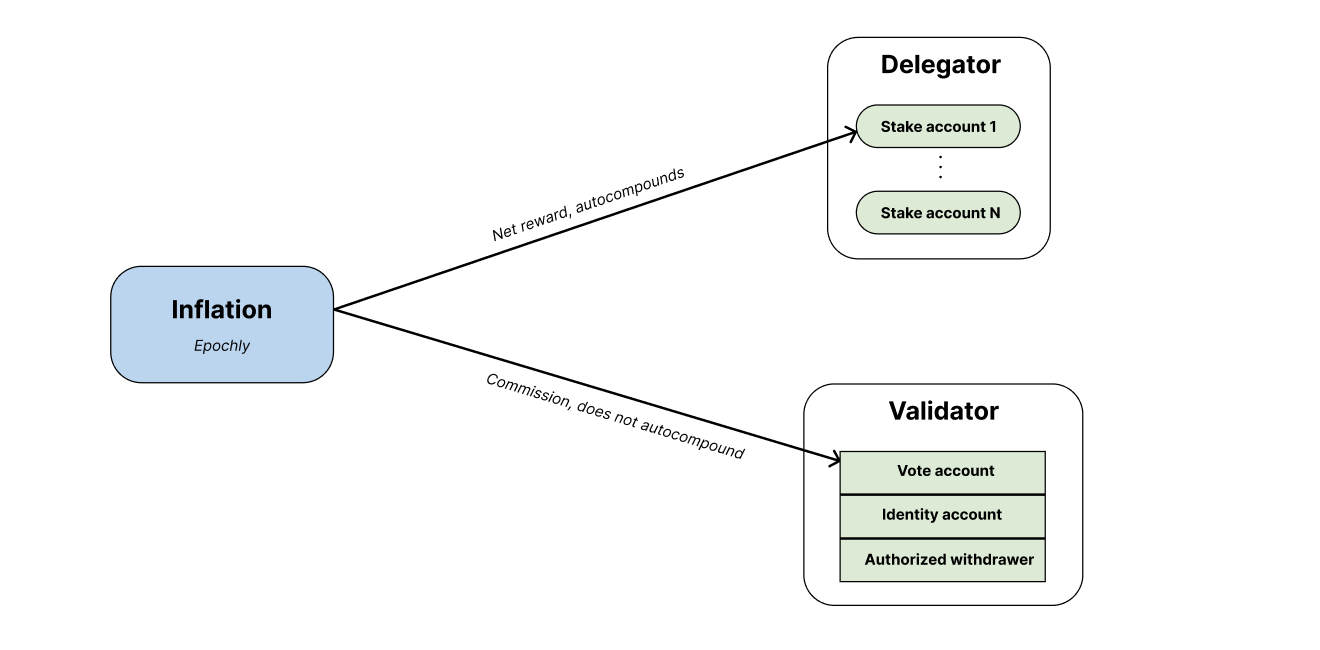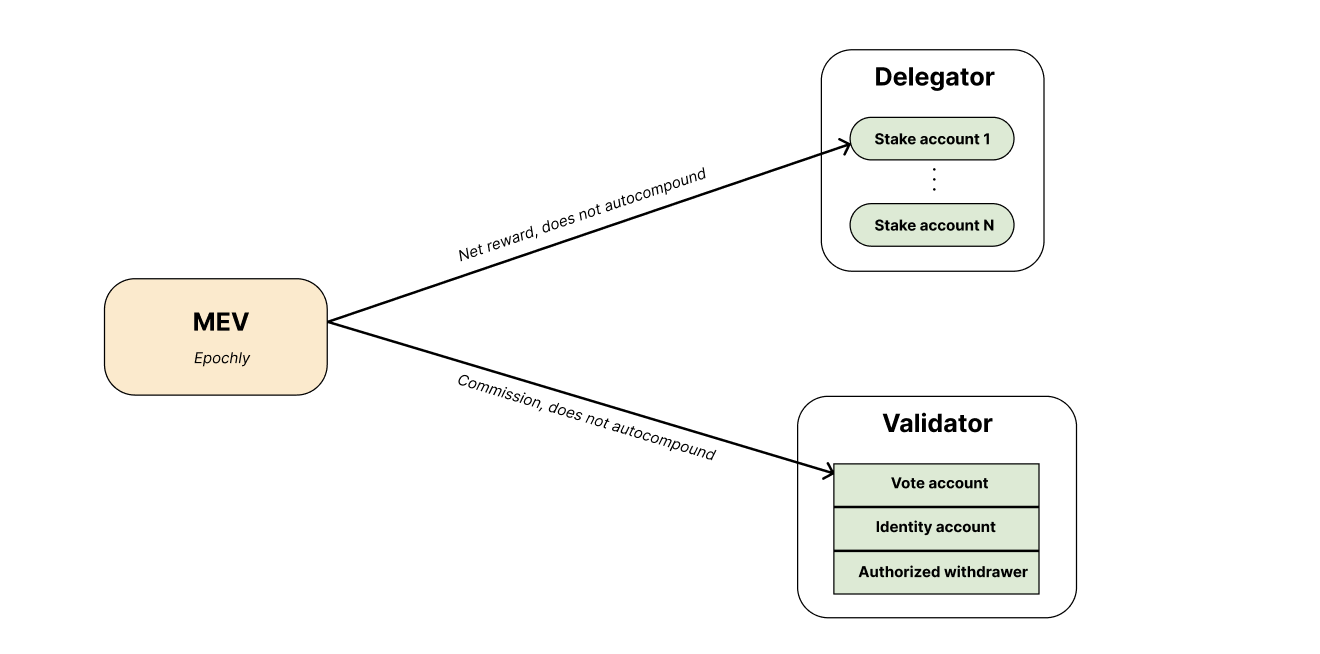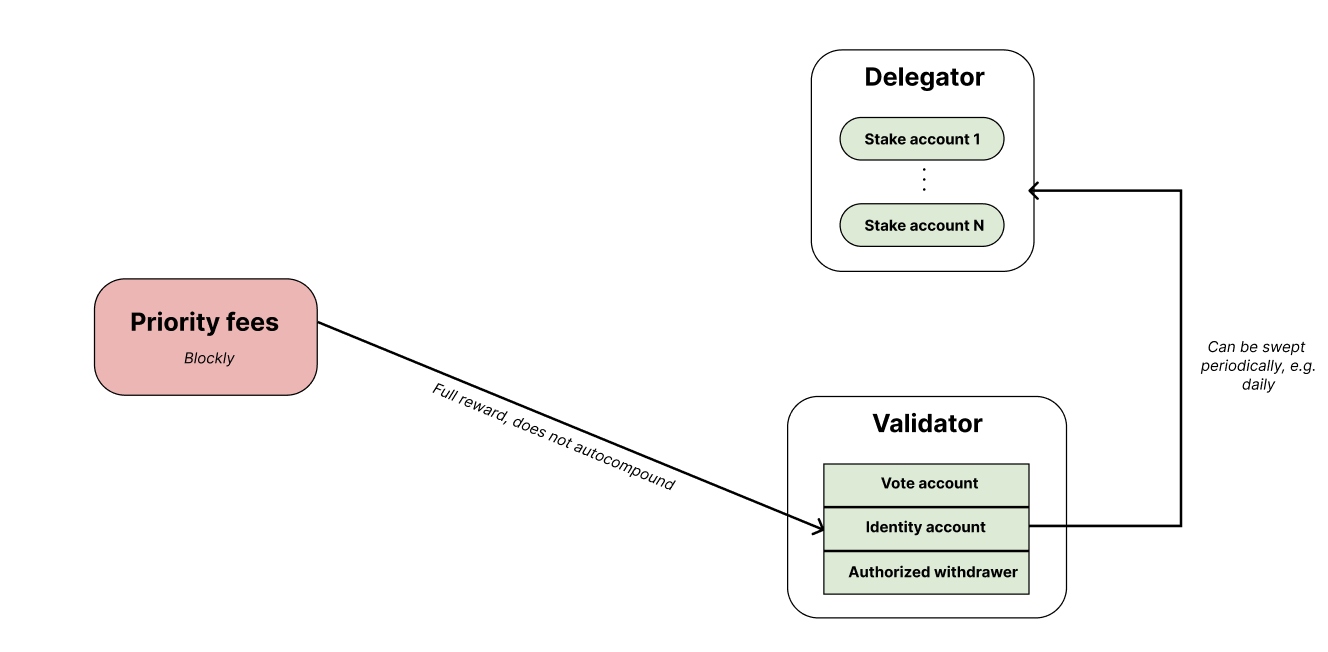Solana 101
A simple explanation of staking on Solana
Key concepts
Solana staking involves delegating SOL tokens to a validator, like Figment, which operates nodes that help secure the network. Rewards are earned based on the validator's performance and the amount of SOL staked. Key points:
Stake account
A new stake account is created for each new stake, thus there is a one-many relationship between your main wallet and stake accounts. When staking, SOL is moved from your main wallet to this new stake account. When unstaking, SOL is moved from a stake account back into your mainnet wallet. Both are logically and technically in your custody within the entire staking lifecycle (Read more in What's Next)
Delegation
When delegated to a validator, funds remain in the stake account and earn rewards by pointing to the validator. Note: re-delegating an active stake account to another validator without deactivation first is not possible.
Rewards
Rewards accrue proportionally based on active stake. There are 3 types of rewards:
- Inflation: Earned each epoch and are generated from new SOL issuance. Validators earn inflation rewards when they vote on blocks created by other validators. Inflation rewards accrue to the stake account's
active_balanceand are thus automatically compounded.

- MEV: Earned epochly and contains Jito tips from MEV searchers hoping to have their transactions included in the block. Increases with network activity. Earned when a validator is selected to propose a block as the “leader” (Solana creates ~216,000 blocks/day). Accrues to stake account
inactive_balancethus not automatically compounded. Check if your custodian supports MEV reward claiming to benefit from compounding

- Priority fees: Earned blockly and contains transaction fees from users looking to prioritize their transactions. 100% earned by the validator's identity account. Validator may sweep these back to delegators periodically net of voting costs (~400 SOL/year) until SIMD-0123 is implemented.

Stake account lifecycle

Status | Description | Action Needed |
|---|---|---|
(before staking) | Stake account created but not delegated to Figment, thus no rewards | Delegate to or |
| Stake account will be activated at the next epoch boundary, and earn rewards the epoch after that | ⌛ |
| Accrue inflation and MEV rewards every epoch in the stake account balance | Optional: Periodically withdraw MEV rewards using or |
| You've broadcasted your signed undelegation transaction and continue earning rewards until the end of the epoch | ⌛ |
(after staking) | Funds are withdrawable in the epoch following deactivation | Withdraw rewards and principal from stake account |
Extra credit: compound MEV rewards
MEV rewards accrue to your stake account's inactive balance and don't auto-compound like inflation rewards. To earn on them, Solana requires you to manually activate them by signing a transaction from your delegating wallet:
- Withdraw your MEV rewards on an active stake account with POST /withdraw. Omitting
amount_solwithdraws all of your MEV rewards and keeps your existing stake active - Delegate your withdrawn SOL with POST /stake
- Earn rewards next epoch!
Start staking in minutes
Try these recipes to programmatically create, sign and broadcast SOL staking transactions now:
Updated 25 days ago
